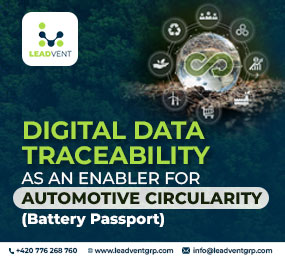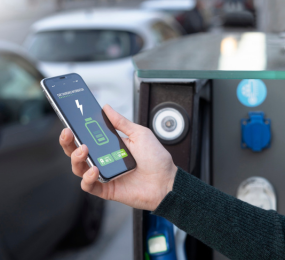Electric vehicles (EVs) are revolutionizing the transportation industry, paving the way for a greener and sustainable future. Yet, as EV adoption accelerates worldwide, it raises a critical question for policymakers, manufacturers, and consumers alike: What happens to the batteries once they reach the end of their usable life?
This question lies at the heart of the ongoing conversation about creating a sustainable and circular economy for EV batteries. To address this, electric car battery recycling companies and industry leaders will gather at the 2nd Annual Electric Vehicle Battery and Recycling Forum 2025, where cutting-edge innovations and challenges in battery recycling will take center stage.
But before we explore the solutions being developed, let's break down the vital question of whether to re-purpose, re-use, or recycle EV batteries and why this decision holds significant importance.
What Happens When EV Batteries Reach the End of Their Life?
EV batteries usually last 8–15 years in a vehicle. After this, their capacity decreases, making them unsuitable for vehicles. However, they often retain 70–80% of their capacity, allowing for secondary uses or recycling. Managing these batteries reduces environmental concerns and ensures ongoing use of resources like lithium, cobalt, and nickel.
Why This Matters
The stakes are high when it comes to EV battery disposal:
- Environmental Concerns - Unchecked disposal of batteries can result in hazardous materials leaching into the environment. A circular approach minimizes this risk.
- Resource Scarcity - With finite reserves of raw materials like lithium and cobalt, efficient recycling is critical to meeting future demand sustainably.
- Cost Efficiency - Efficient secondary usage could reduce the cost of raw materials, lowering the entry barrier to EV ownership.
A Look at The Numbers
Research suggests that the Electric Vehicle Battery Recycling market in Europe, valued at $1.9 billion in 2022, is expected to grow at a remarkable CAGR of 21%, reaching $10.5 billion by 2032. This data underscores the growing importance of addressing end-of-life battery management and fostering a circular economy.
Step 1: Re-purpose Batteries for a Second Life
Re-purposing EV batteries allows them to be reused for alternative applications. This approach takes advantage of their remaining energy capacity, preventing waste and expanding the battery’s lifecycle.
Use Cases:
- Energy Storage Systems (ESS): Batteries can store renewable energy from sources like solar or wind and provide power back to the grid during peak demand. Notable projects, like Tesla's Powerwall, emphasize the viability of this concept.
- Commercial and Residential Use: Re-purposed batteries can be used to power homes or businesses, creating affordable and sustainable energy storage solutions.
Case Study:
The Jaguars I-Pace Second Life Battery Project in collaboration with Nissan reuses old EV batteries to run renewable energy grids, significantly lowering emissions for customers in the UK.
Challenges:
- High costs of retrofitting batteries for alternate uses.
- Limited standardization between EV battery types makes re-purposing more complex.
Step 2: Re-use Batteries with Refurbishment
Re-using through refurbishment involves giving batteries a second chance in the automotive landscape or similar applications. By replacing faulty cells, batteries are restored for extended use.
Use Cases:
- Entry-level EVs: Refurbished batteries can power smaller, cost-efficient electric vehicles.
- Industrial Vehicles: Batteries can be repurposed for forklifts, golf carts, or electric rickshaws.
Case Study:
Global automotive brands like Renault initiated programs where refurbished batteries are provided to customers, creating a cost-effective secondary market for EV batteries.
Challenges:
- Uncertainty around how long "second-hand" batteries will last.
- Warranty and trust issues, as end users may scrutinize the performance of refurbished options.
Step 3: Battery Recycling
Recycling is a vital step in ensuring the materials within end-of-life batteries are recovered, reducing dependency on mining raw materials. Lithium-ion battery recycling usually involves dismantling, shredding, and extracting essential materials.
Why Recycling Works:
- Provides materials for new battery manufacturing, reducing costs for EV makers.
- Ensures safe disposal of hazardous substances, giving manufacturers an edge in meeting environmental regulations like Directive 2006/66/EC in Europe.
Innovations in Recycling:
- Hydrometallurgy (chemical leaching) offers higher yields of lithium, cobalt, etc., compared to traditional methods like pyrometallurgy.
- Companies like Green Li-Ion work toward 100% battery material recovery with zero waste using cutting-edge innovative approaches.
Challenges:
- Recycling processes require heavy investment.
- Current infrastructure isn’t scaled to meet the global demand.
Innovations Driving the Battery Recycling Industry
Key Takeaways from the Electric Vehicle Battery and Recycling Forum
Leading experts at the Electric Vehicle Battery and Recycling Forum 2025, such as representatives from EBRA (European Battery Recycling Association) and Daimler Truck AG, aim to:
- Explore innovations in second-life applications and recycling.
- Assess how to overcome end-of-life challenges, from dismantling batteries to transportation.
- Advocate for regulatory frameworks supporting a circular approach.
The forum also dives deeper into crucial topics like battery passports for digital traceability, new EU regulations, and minimizing environmental impacts.
FAQs
1) What is the most eco-friendly way to deal with EV batteries?
The best strategy depends on the battery's condition. Fully depleted batteries should be recycled, while those still holding charge can be re-purposed or refurbished.
2) Why is EV battery recycling so expensive?
Battery recycling involves advanced technology for dismantling and extracting rare materials. Costs can decrease with improved technologies and greater adoption.
3) What is the role of regulations in battery recycling?
European legislation, such as Directive 2006/66/EC, mandates recycling by manufacturers and promotes reducing landfill waste.
4) Are there incentives for recycling EV batteries?
Some governments and manufacturers offer financial incentives to recycle batteries or purchase vehicles equipped with recycled materials.
Driving Sustainability with End-of-Life Battery Management
The decision to re-purpose, re-use, or recycle batteries at the end of their life will define the future of the EV battery industry. A robust circular economy can ensure maximum utility from resources while minimizing the environmental footprint.
Want to lead the green transformation? Join like-minded industry leaders at the 2nd Annual Electric Vehicle Battery and Recycling Forum 2025 and shape the future of sustainable battery management.












